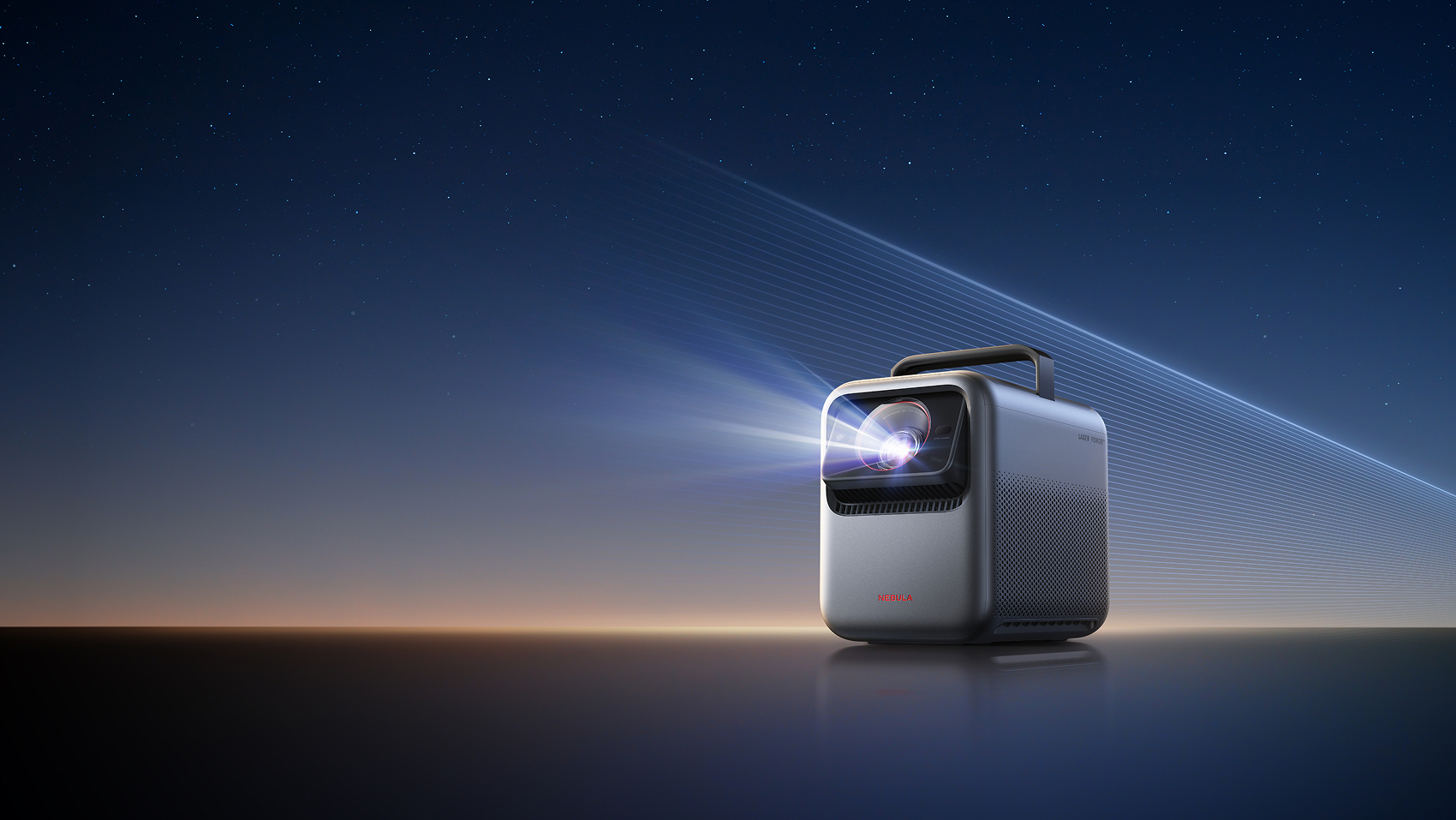Denon AVC-X6800H vs Marantz Cinema 30: which premium AVR should power your home cinema speaker system?
Denon or Marantz? We can answer that question

HDMI inputs x 7
HDMI outputs x 3
ARC/eARC eARC
HDMI 2.1 features 4K120Hz/8K60Hz, VRR and ALLM on all ports
Amplification 11 channels
HDR formats HLG, HDR10, HDR10+, Dolby Vision
Audio formats Dolby Atmos, Dolby TrueHD, DTS:X, Neural:X, Auro-3D
Streaming HEOS, AirPlay 2, Spotify Connect, Amazon Music HD, Tidal, TuneIn, Roon Tested, Bluetooth
Voice assistants Compatible with Alexa, Google Assistant, Siri
Verdict Denon delivers on its trademark sound characteristics to great effect, with a clearer and punchier model this year, topped off with enhanced HDMI connectivity and an improved user experience
For
- Easy going and engaging sound, capable of huge scale
- Fully featured
- Intuitive set-up and operation
Against
- Some rivals offer a more direct presentation

HDMI inputs x 7
HDMI outputs x 3
ARC/eARC eARC
HDMI 2.1 features 4K/120Hz, 8K/60Hz, VRR, ALLM, QMS on all rear HDMI inputs and two outputs
Amplification 11 channels
HDR formats HLG, HDR10, HDR10+, Dolby Vision
Audio formats Dolby Atmos, Dolby TrueHD, DTS:X, Neural:X, Auro-3D
Streaming HEOS, AirPlay 2, Spotify Connect, Amazon Music HD, Tidal, TuneIn, Roon Tested, Bluetooth
Voice assistants Compatible with Alexa, Google Assistant, Siri
Verdict The Cinema 30 delivers all of the luxury and refinement you would expect from Marantz, with all of the crispness and punch you could desire and all of the latest tech specs, too, making it a rare all-rounder of an AVR
For
- Smooth, refined and always in control
- Huge scale, punch and spatial precision
- Plenty of HDMI 2.1 inputs and outputs
Against
- 40Gbps HDMI limit might be a small issue in the future
Think of Denon and Marantz like two houses in Game Of Thrones; technically speaking they're separate entities, but they are deeply intertwined through family bonds. That being said, each company continues to develop their own respective AV receivers with their distinctive sound characteristics being the key differentiator.
Both companies have recently launched premium AVRs, and coincidentally both scored five stars in our full reviews. The Denon AVC-X6800H and Marantz Cinema 30 are two eye-catching and, more importantly, great-sounding AVRs – but which one should you choose?
Denon AVC-X6800H vs Marantz Cinema 30: price
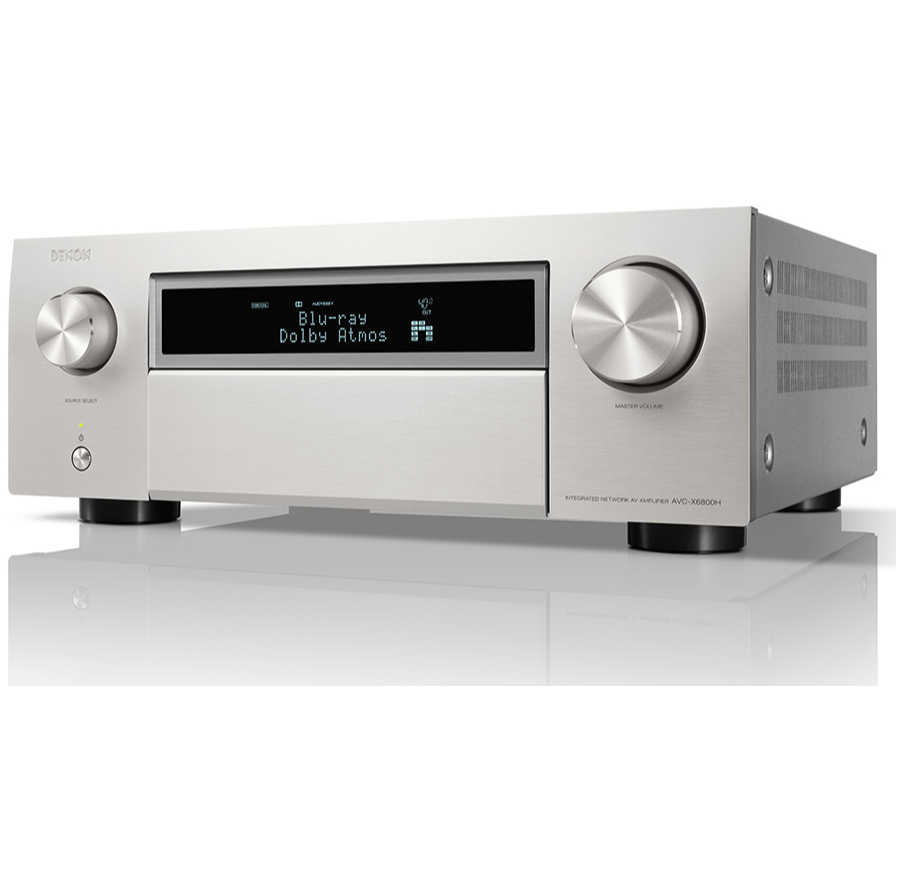
As we noted in our full review of the Denon AVC-X6800H, the latest model from Denon has launched at a higher price than its predecessor. At £2999 / $3500 / AU$5999, the X6800H is pricier than the X6700H which launched at £2299 / $2499 / AU$6190; however, it's worth noting that in the UK that price has already dropped to around £2799. Better still is that the Denon is much cheaper than the Marantz.
The Cinema 30 is £4000 / $4500 / AU$7900, which is a grand more in the UK and US, and nearly AU$2000 more Down Under. Unlike the Denon, the price of the Marantz is holding firm for now, so you had better be prepared to cough up the extra cash if you want the Marantz. Is the Marantz worth the extra money though? That's the question we're here to answer.
** Winner: Denon AVC-X6800H **
Denon AVC-X6800H vs Marantz Cinema 30: design
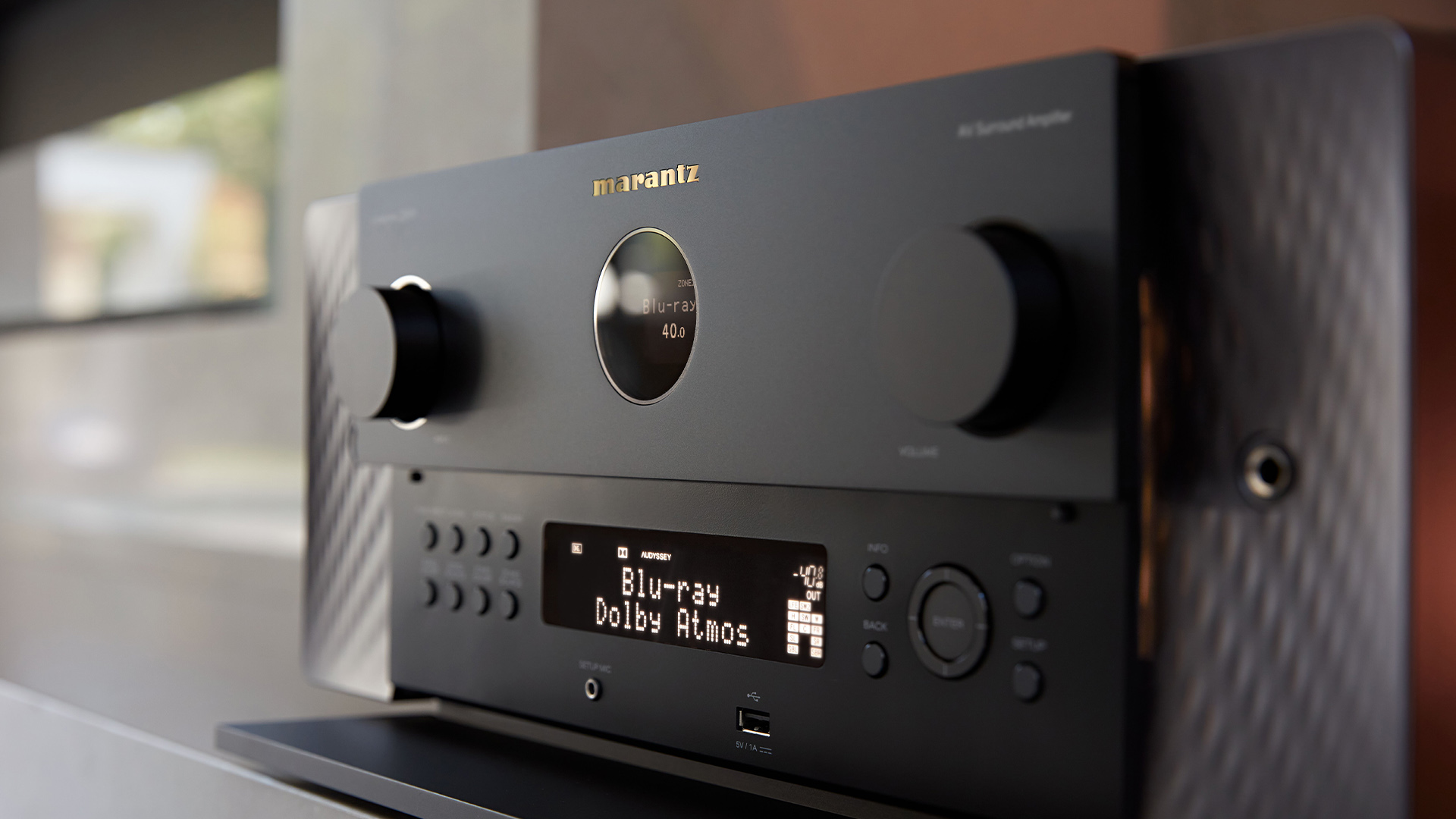
Sure, design is subjective – but come on, just look at that Marantz, it's a thing of beauty. Its subtle golden highlights, textured metal accents, tasteful side lighting and circular display in the centre cement it as the more visually appealing receiver. Even its remote is luxurious, with a metal finish and backlit buttons that are activated by a perfectly positioned side-mounted button. The Marantz's design is also a complete breath of fresh air compared to the model it replaces. It's a totally new design compared to the SR8015 which launched in 2020.
The Denon, on the other hand, looks like every other Denon AVR we've reviewed. Its brushed metal finish looks smart, while the sharp, boxy shape is functional if not remarkably attractive. Denon's signature styling is going nowhere, and while we don't have any concerns when it comes to functionality, it's by no means a stand-out performer in the looks department.
While this factor may not wildly influence your decision, it's worth noting for style-conscious AV enthusiasts that the Marantz is the looker out of this pair.
** Winner: Marantz Cinema 30 **
Denon AVC-X6800H vs Marantz Cinema 30: features
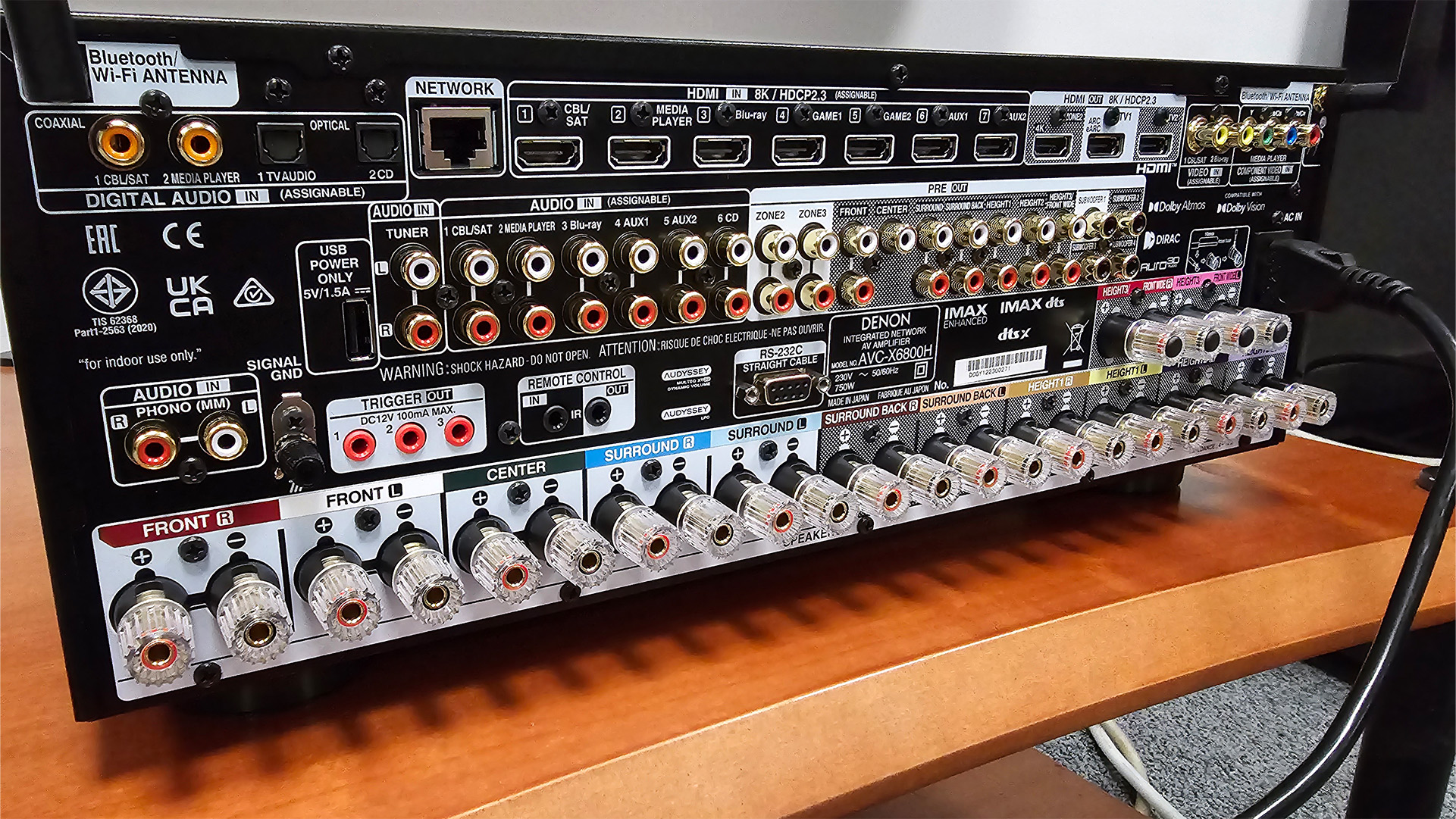
Here is where things get slightly trickier to judge, as these AVRs have a practically identical feature-set on paper. Both support up to 11 channels of amplification, supporting a maximum speaker arrangement of 7.2.2. They also both support a wide range of audio formats, including Dolby Atmos and DTS:X immersive audio alongside Dolby TrueHD, Neural:X and Auro-3D. Internally, both systems use the latest 32-bit ESS digital-to-analogue converters, as well as upgraded power supplies and transistors. The Marantz ever so slightly edges out the Denon here, as it features HDAMs (essentially amplifier modules that consist of discretely mounted components rather than an integrated circuit) which allows for greater fine-tuning by the Marantz engineers.
Furthermore, they have a near-identical HDMI specification, with three outputs and seven inputs. All of the inputs are rated as HDMI 2.1 on both devices, meaning they are capable of handling up to 4K/120Hz or 8K/60Hz signals. However, they also carry a peculiar restriction of 40Gbps bandwidths, rather than the full 48Gbps we see on other HDMI 2.1 devices. We don't suspect this will be an issue, as neither AVR is missing any gaming features (both support VRR and ALLM), but it could potentially pose an issue further down the line if the next generation of consoles feature more advanced HDMI technology. That is, of course, a hypothetical, so don't let it bog down your buying decision too much.
Moving on to wireless connectivity, yet again, both of these amplifiers are once again practically identical. Both leverage the HEOS wireless streaming system, which can integrate with other HEOS devices for a multi-room set-up if you so desire. You can stream music from a mobile device via the HEOS app too, and connect multiple streaming services (such as Tidal and Amazon Music) to the HEOS app to use it as a hub of sorts. If you prefer a more direct approach, you can use AirPlay 2, Spotify Connect or Bluetooth to get streaming straight away. TuneIn is also on board for streaming radio over the internet, and both models are Roon Ready.
Moving onto HDR support and, stop us if you've heard this one before, both AVRs feature practically identical specs. Both support HDR10, HDR10+, Dolby Vision and HLG, meaning there should be no compatibility issues with hooking these up to certain TV or projector models that only support a limited set of HDR formats.
Rounding things off, both systems are a breeze to set up with on-screen directions and the microphone-assisted Audyseey system. Further refinements and calibration can be made via Dirac, although that incurs an additional cost.
Essentially, these AVRs are uncannily similar to the extent that it's too close to call a clear winner, resulting in a draw.
** Winner: draw **
Denon AVC-X6800H vs Marantz Cinema 30: sound
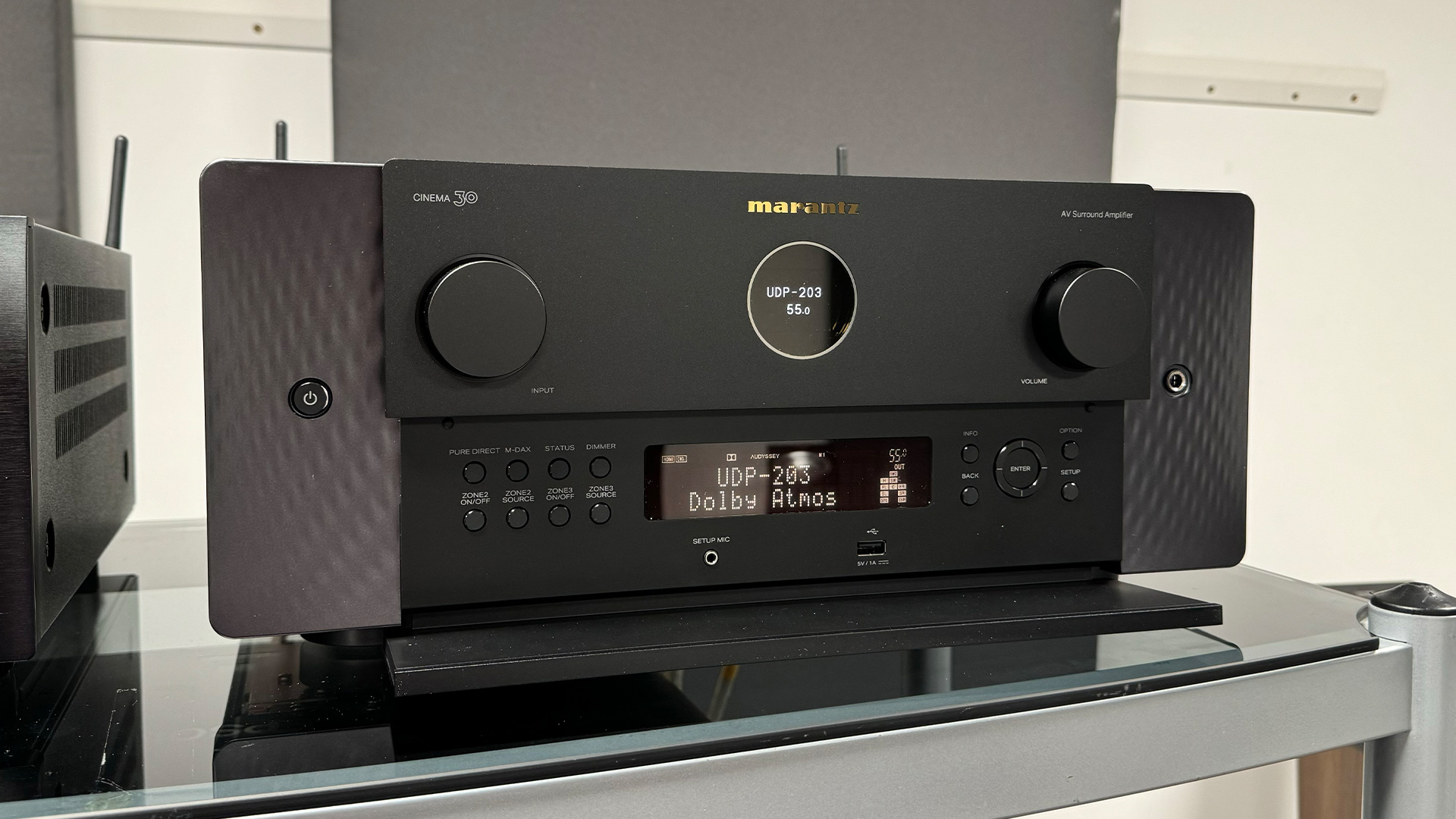
This is, by all accounts, the most important category. Sound is everything when we judge an AVR, so how do these five-star amplifiers stack up? Let's start with the Denon, as it was the first of these two AVRs that we reviewed. It delivers a rich, powerful and well-rounded sound that is brilliantly immersive.
Not only does it nail the basics with a clear, rich and detailed sound, but it can also deliver a large-scale sound when required. During large-scale scenes found in the likes of Dune Part One, the Denon digs deep to provide a sound that is huge in scale and scope. It's effective at reproducing a sense of space, with everything from huge aircraft carriers and sprawling deserts presented just as effective as scenes set in medium-sized rooms.
It's also dynamically talented, adding the necessary punch to sudden explosions in Oppenheimer. That dynamism is reflected at lower levels too, with dialogue being rewarded with subtle tonal variation that really elevates vocal performances. In scenes with lots of background noise and dialogue at the same time, the Denon captures the atmosphere of the space without sacrificing clarity when dialogue is concerned, which is a major win for us.
Furthermore, it excels in directionality and height presentation, making it a truly impressive performer in practically every respect. We could accuse the Denon of rolling off some effects in favour of its easygoing and rich characteristics, but overall the Denon is a stunning performer.
However, there is one problem that the Denon cannot escape... and that's that the Marantz is even better. Much like the Denon, it is rich and powerful with a smooth and rich sound; it also handles large-scale scenes with the necessary oomph. It's the Marantz's adeptness at handling spatial sound that really wins us over though, with pinpoint directionality when it comes to vocals and larger effects alike.
The Cinema 30 also excels dynamically, with everything from the brash, metal-crunching crashes of Mad Max: Fury Road to the whisper-quiet ambushes that explode into all-out battle in Dune Part Two being handled with masterful dynamism. It also happens to be more musical than the Denon too, with a controlled yet delicate and considered performance that nails timing and isn't afraid to up the pace where required.
Simply put, the Marantz steals the Denon's thunder, and while they're both five-star performers, we have to give it to the Marantz on sound quality alone.
** Winner: Marantz Cinema 30 **
Denon AVC-X6800H vs Marantz Cinema 30: verdict
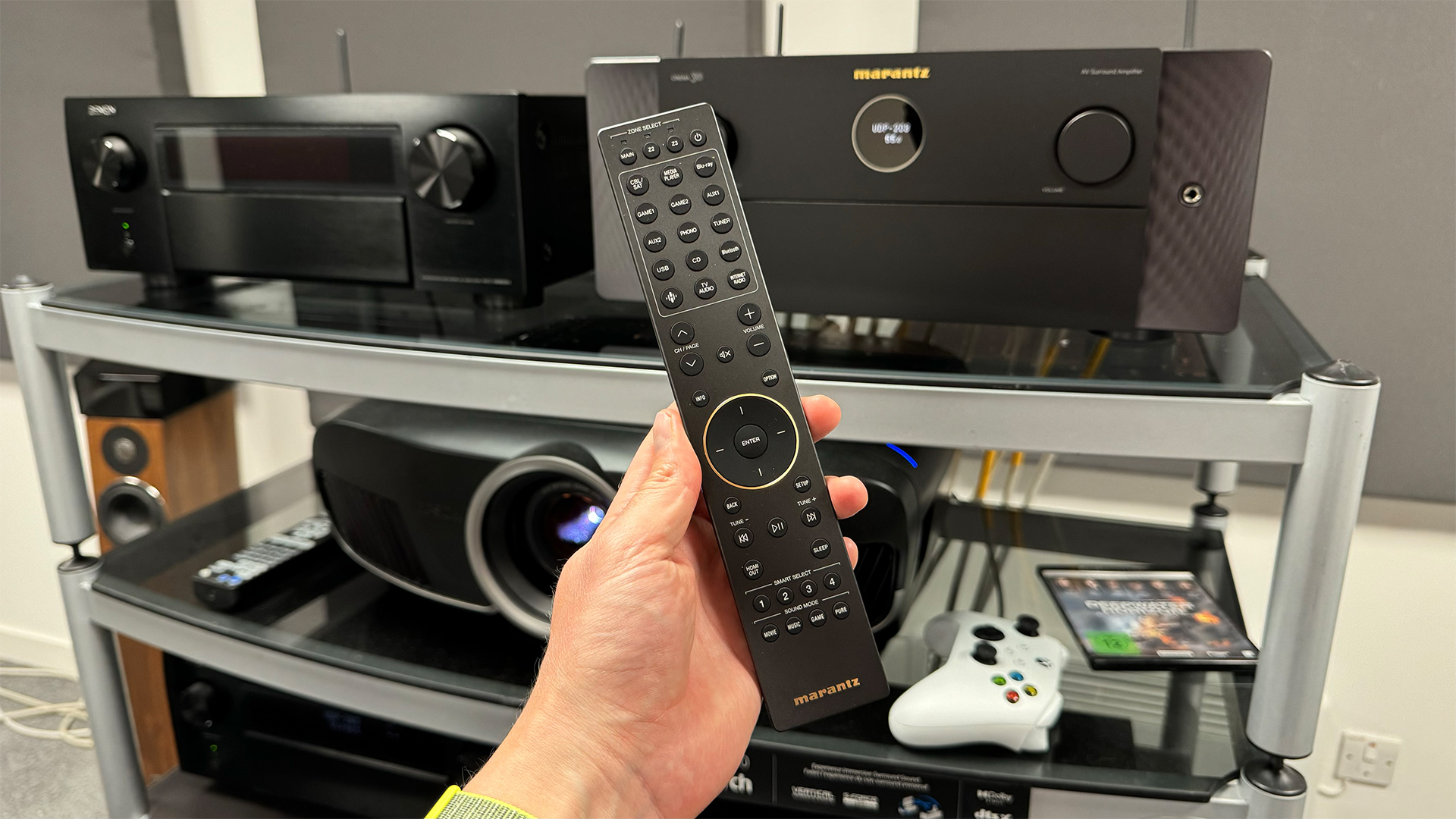
We've said it once, but we'll say it again – these are two excellent home cinema amplifiers. If you opt for the cheaper Denon AVC-X6800H, we can promise you won't be disappointed as it sounds great and has a fully stocked feature set.
However, if money is no object, then the Marantz is worth spending extra on. Sound performance is the key attribute here, and the Cinema 30 is a step up in this regard. Its enhanced directionality and powerful dynamics make it more immersive and dig out intricacies in nearly every piece of dialogue or sound effect.
** Overall winner: Marantz Cinema 30 **
Check out our picks for the best AV receivers
Here are 5 crucial tips to help you get the most out of your Denon AVR
And find the best surround sound systems to go with your new AVR
Get the What Hi-Fi? Newsletter
The latest hi-fi, home cinema and tech news, reviews, buying advice and deals, direct to your inbox.
Lewis Empson is a Senior Staff Writer on What Hi-Fi?. He was previously Gaming and Digital editor for Cardiff University's 'Quench Magazine', Lewis graduated in 2021 and has since worked on a selection of lifestyle magazines and regional newspapers. Outside of work, he enjoys gaming, gigs and regular cinema trips.
-
Tanquen I got the 6800 earlier this year and QMS was unceremoniously removed and e-arc is all but non functional. Is the marantz any better? The 6800 would also randomly go to a black screen and until you power cycled the device. Thankfully I was able to return the unit but at current pricing this kind of stuff is ridiculous. Why is my $4,000 HDMI switch so bad at HDMI switching?Reply -
dobyblue just to correct part of the article, it says:Reply
“Both support up to 11 channels of amplification, supporting a maximum speaker arrangement of 7.2.2”
The maximum speaker arrangement is 7.x.4 as subwoofers aren’t using amp channels. You could have four independent subs with either of these to hit 7.4.4
You could also do a 9.4.2 setup using two Atmos and two front wide in addition to standard 7-channel placements, or Auro 3D.
For 7.x.6 you’d need to bump to Denon’s 15CH bad boy, and still have two spare channels to run your zone 2!
I’m seeking the Cinema 30, what a beaut!
